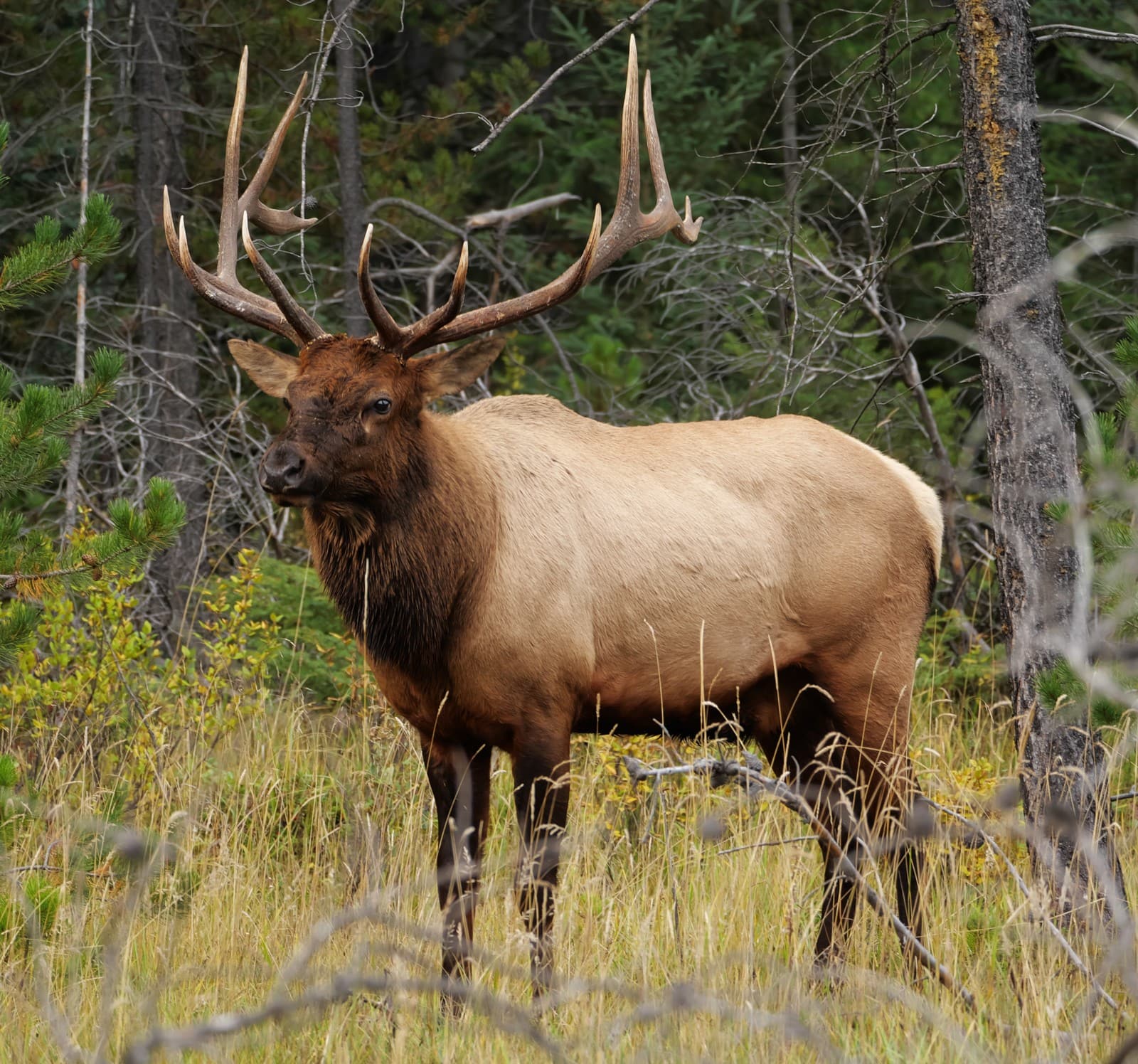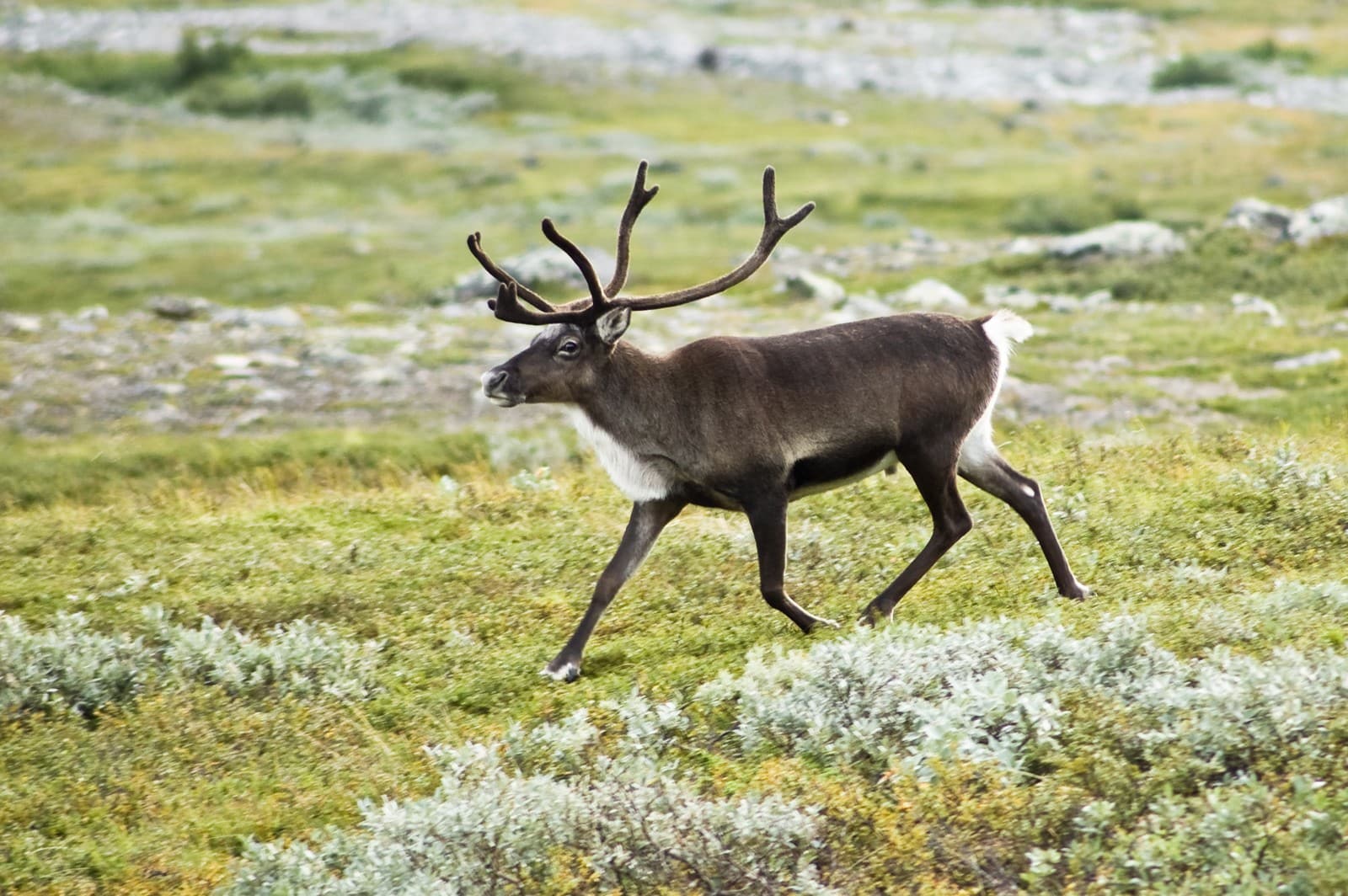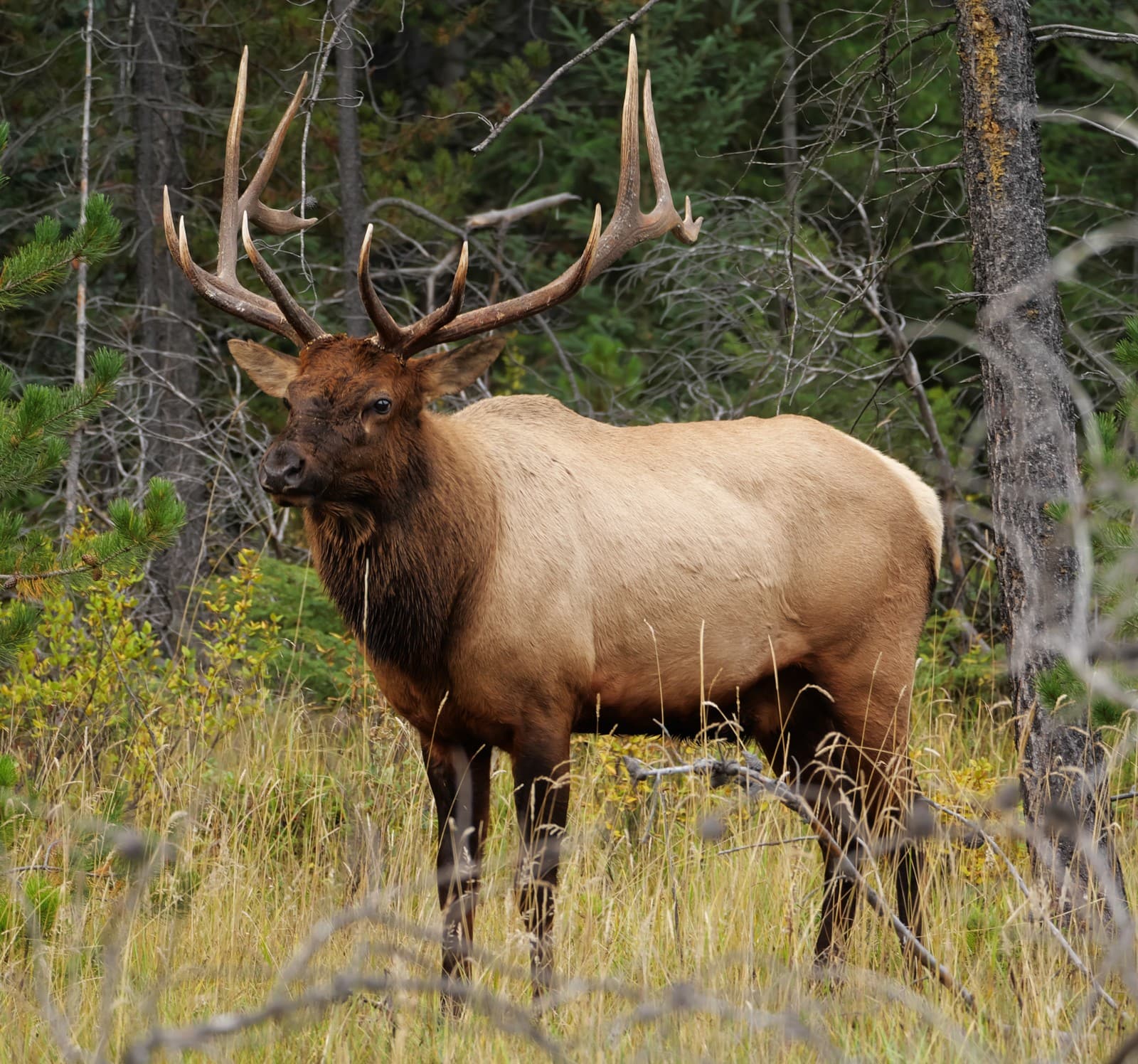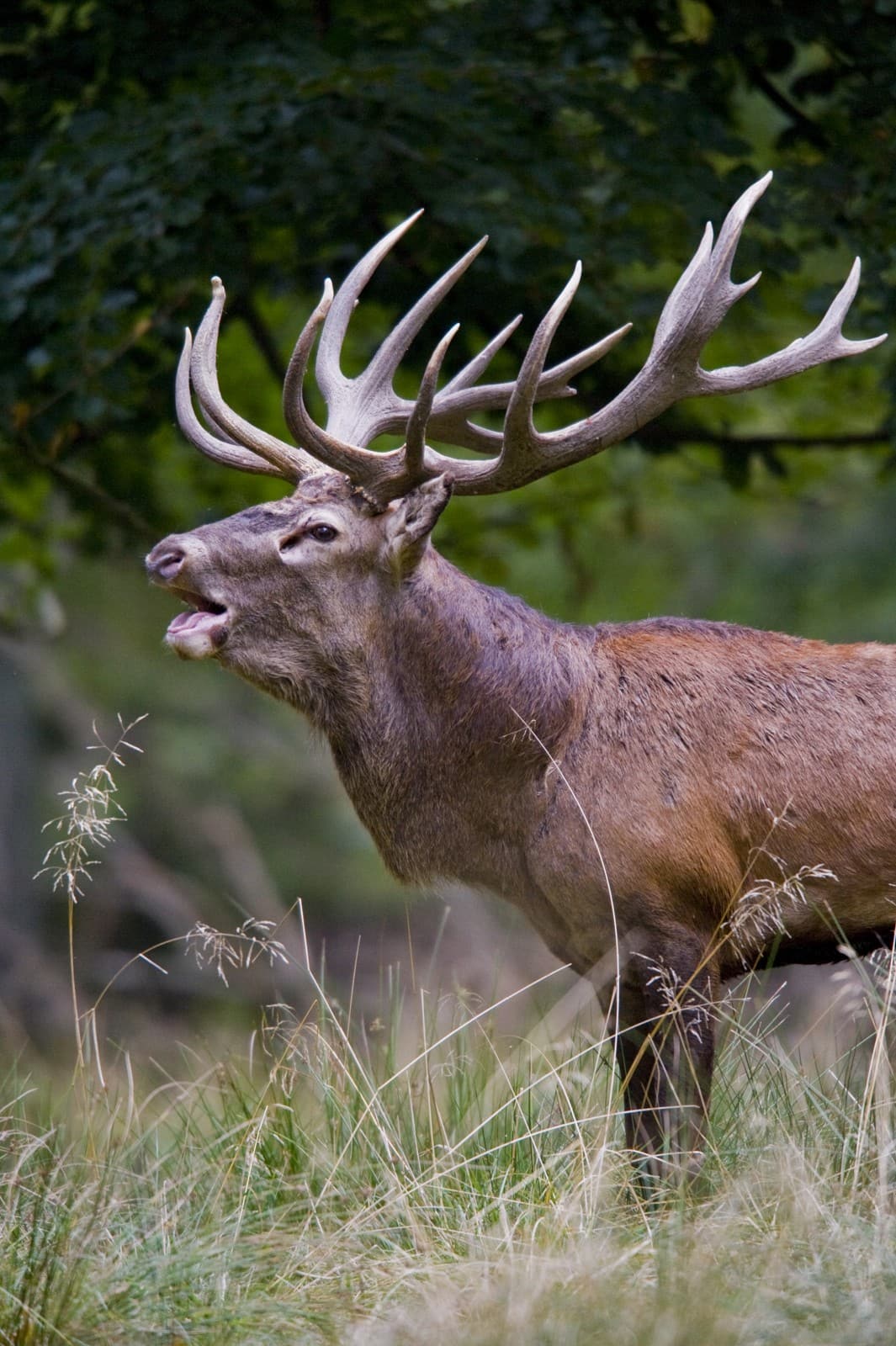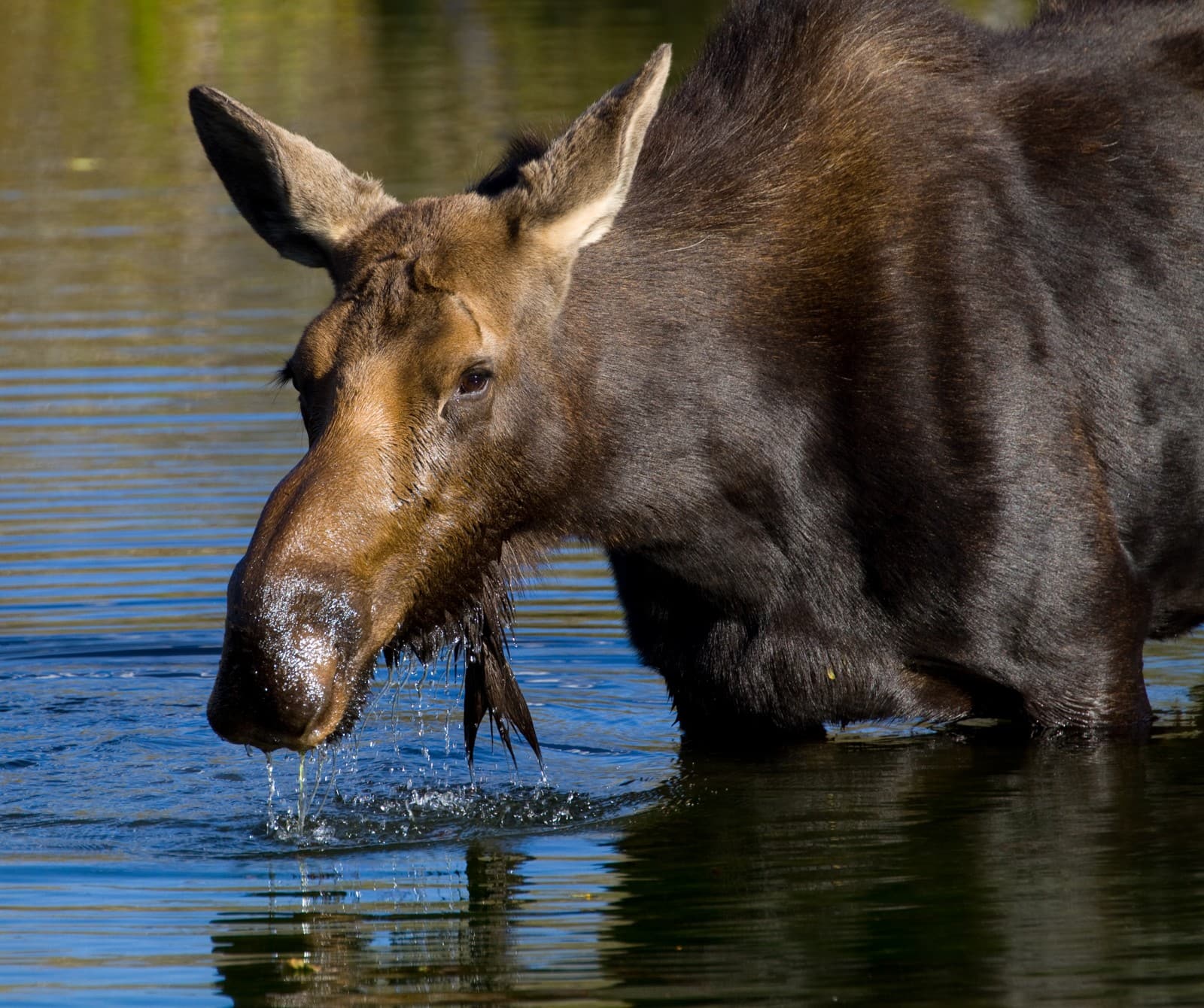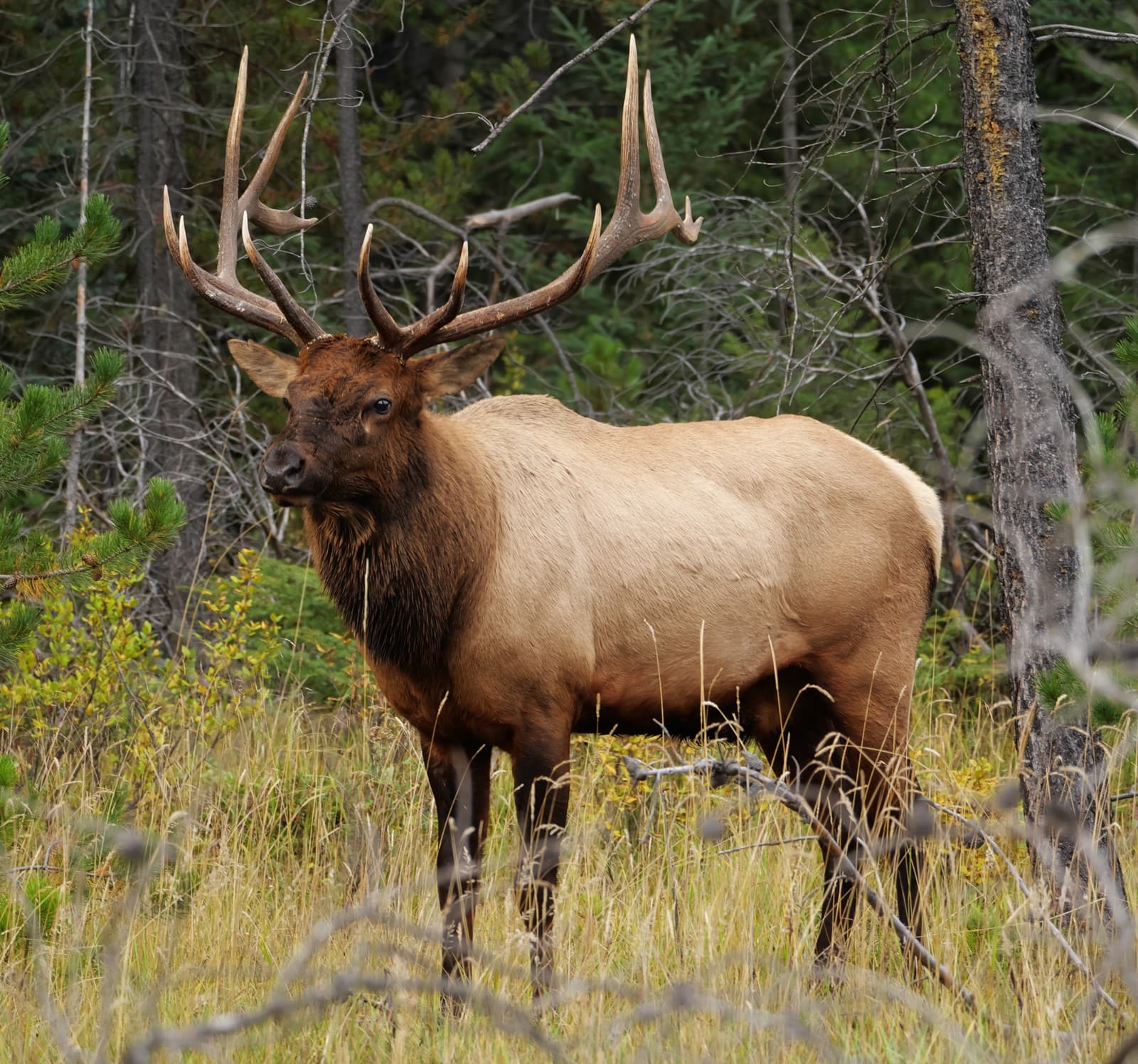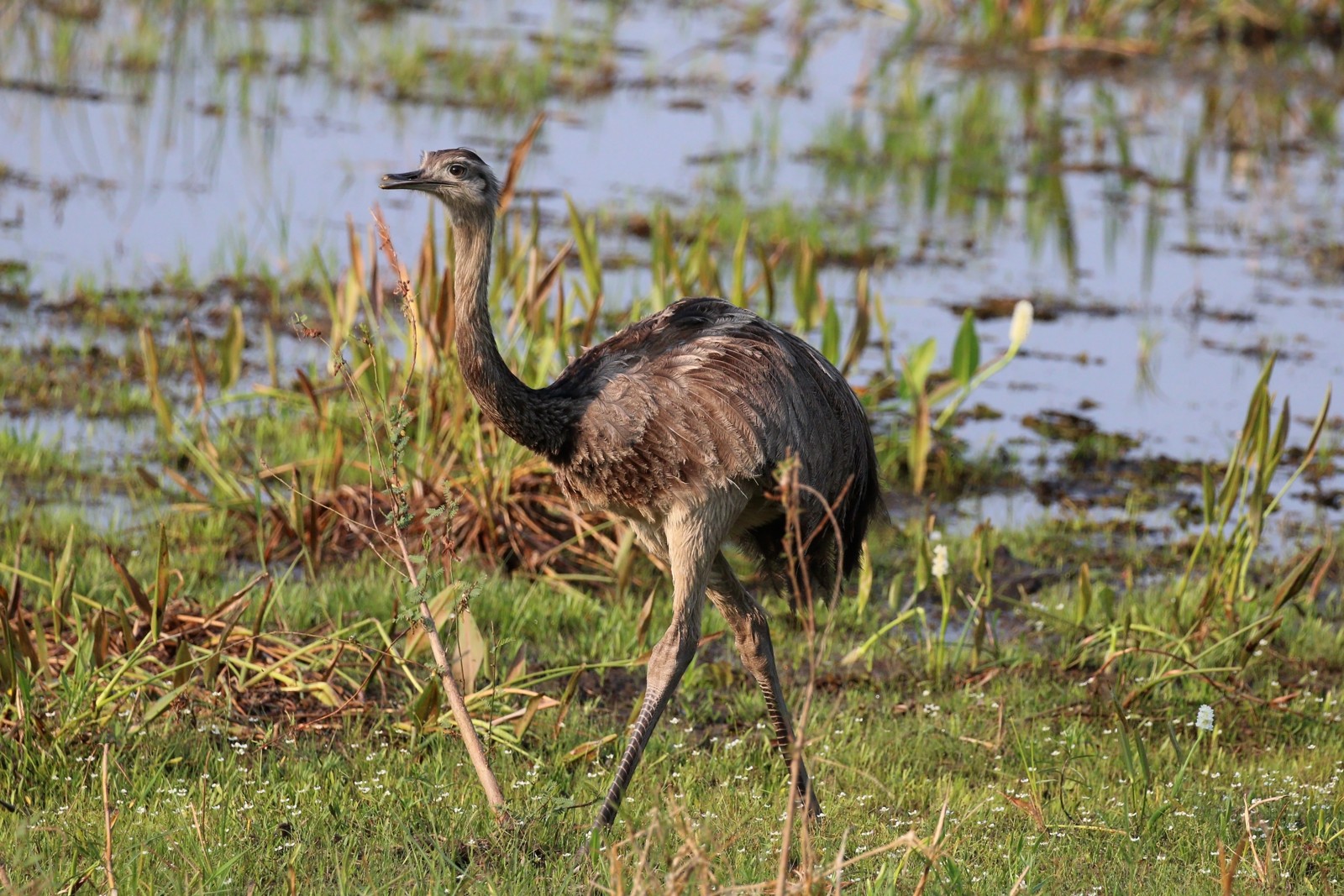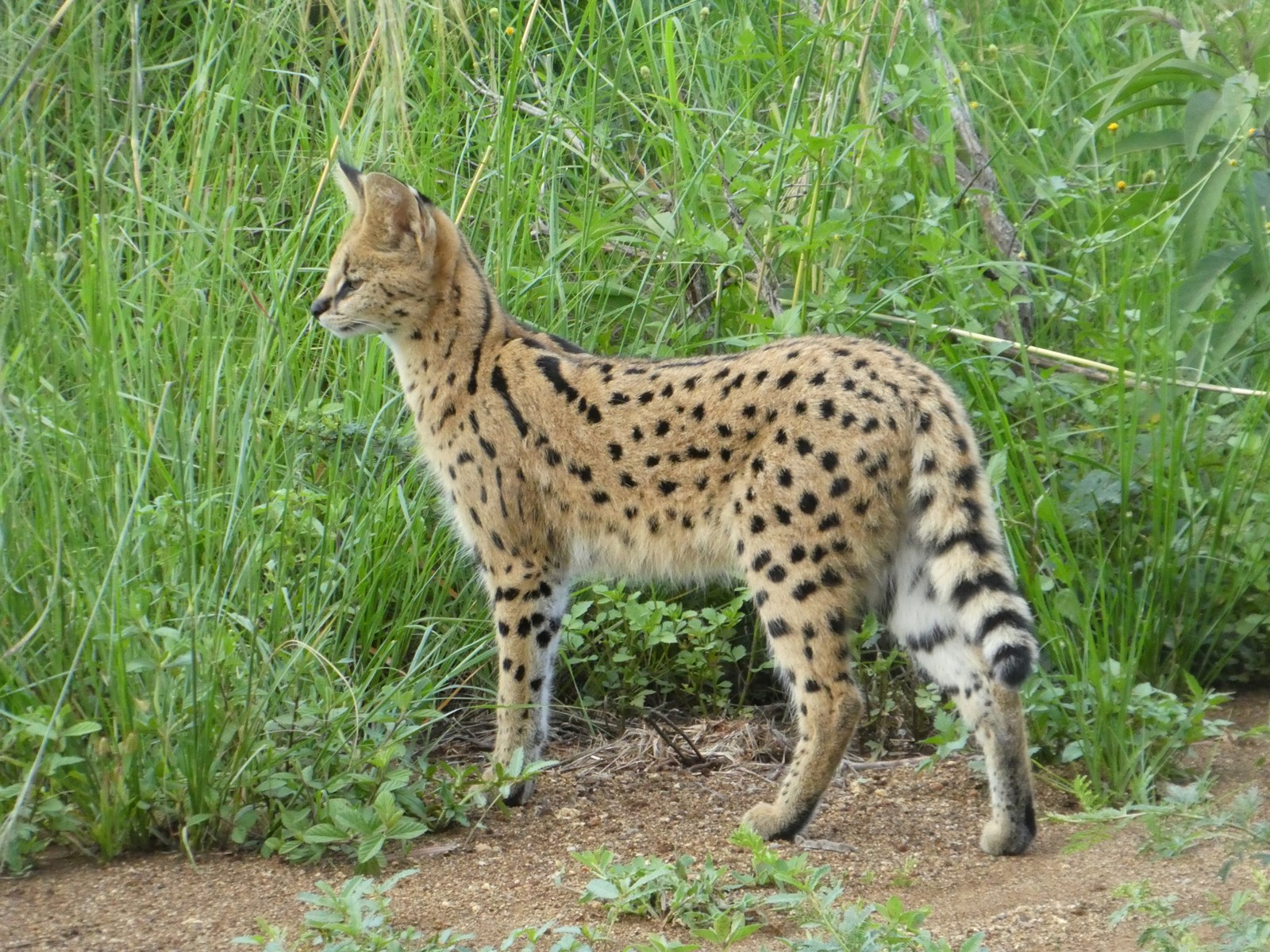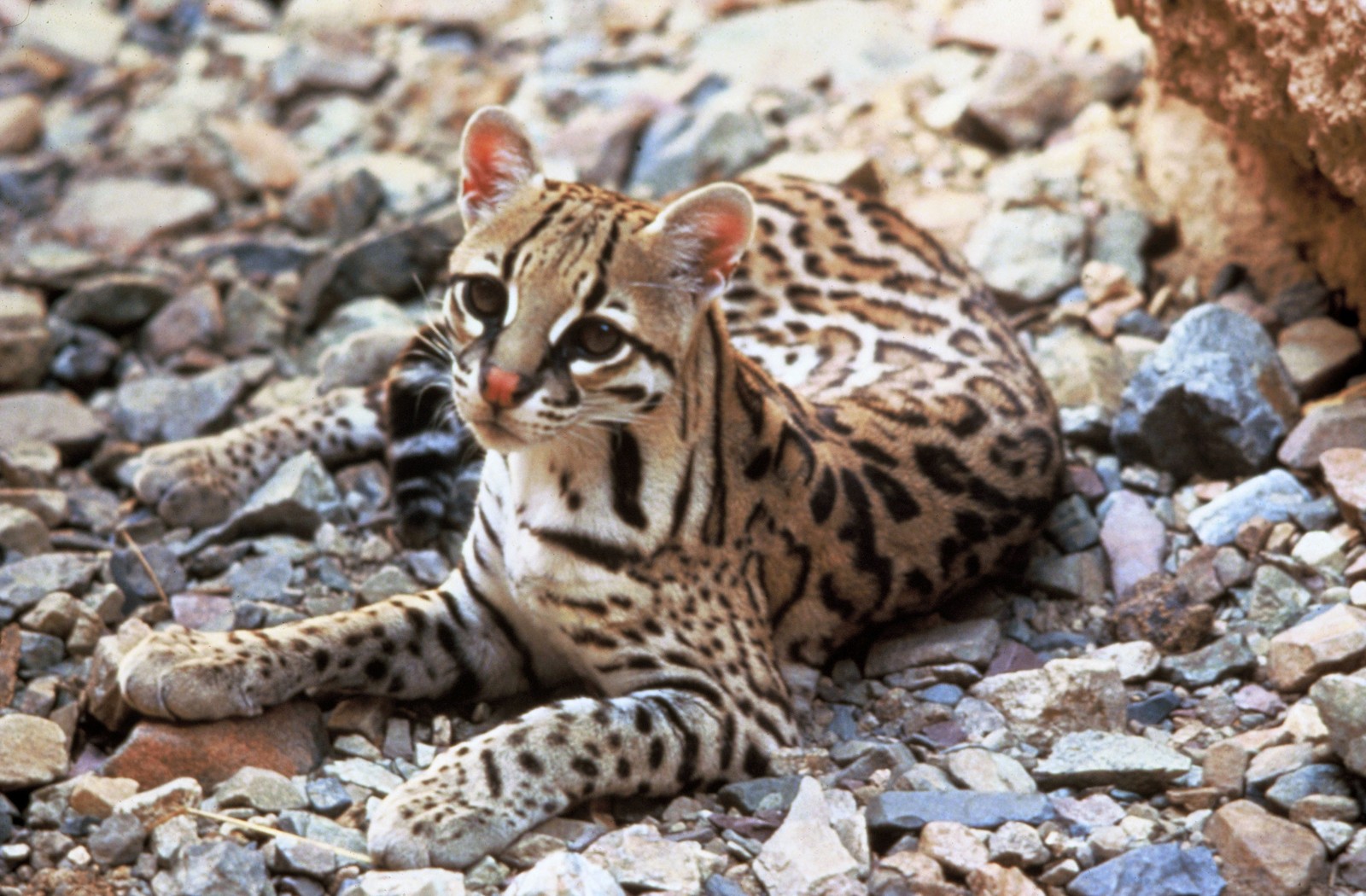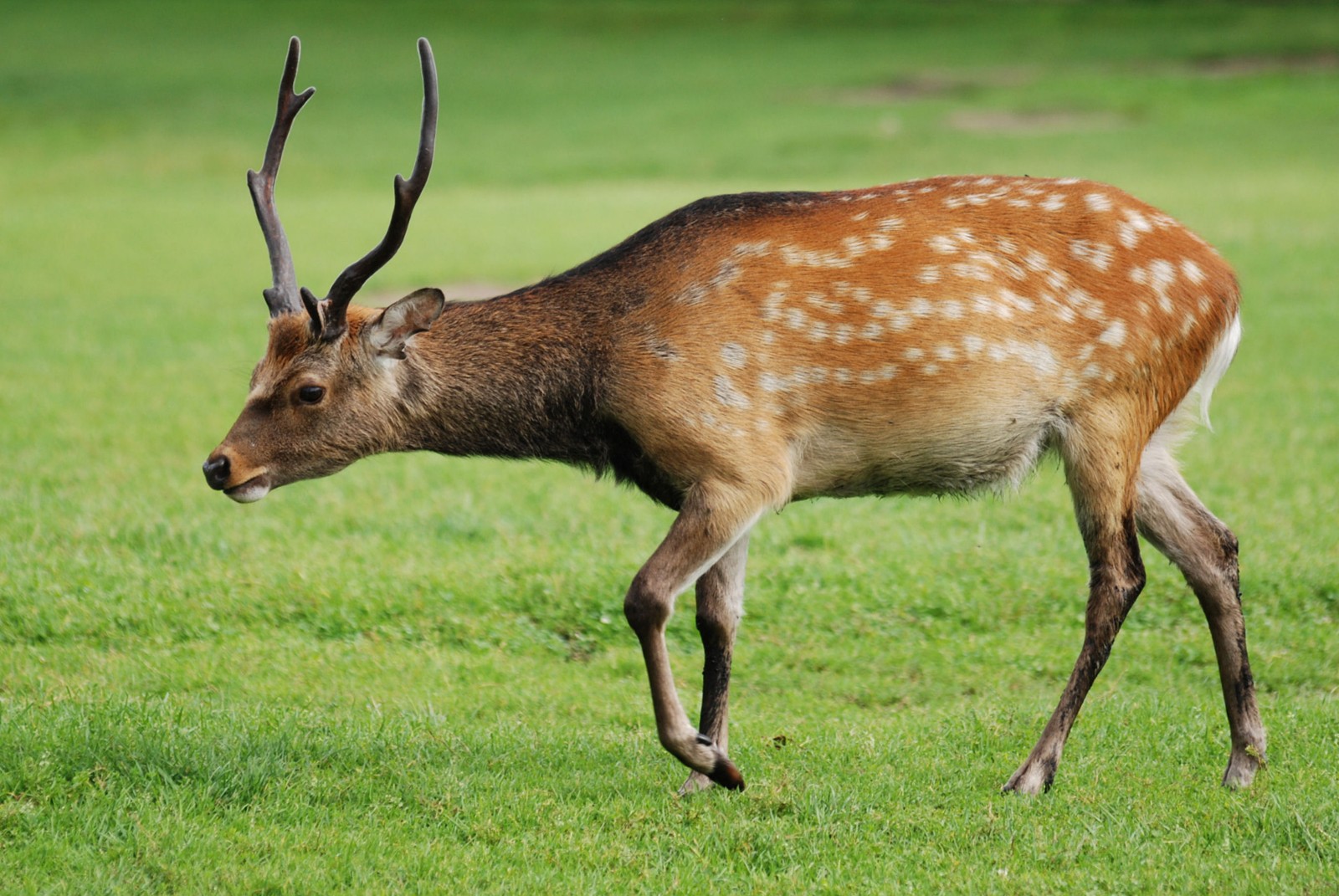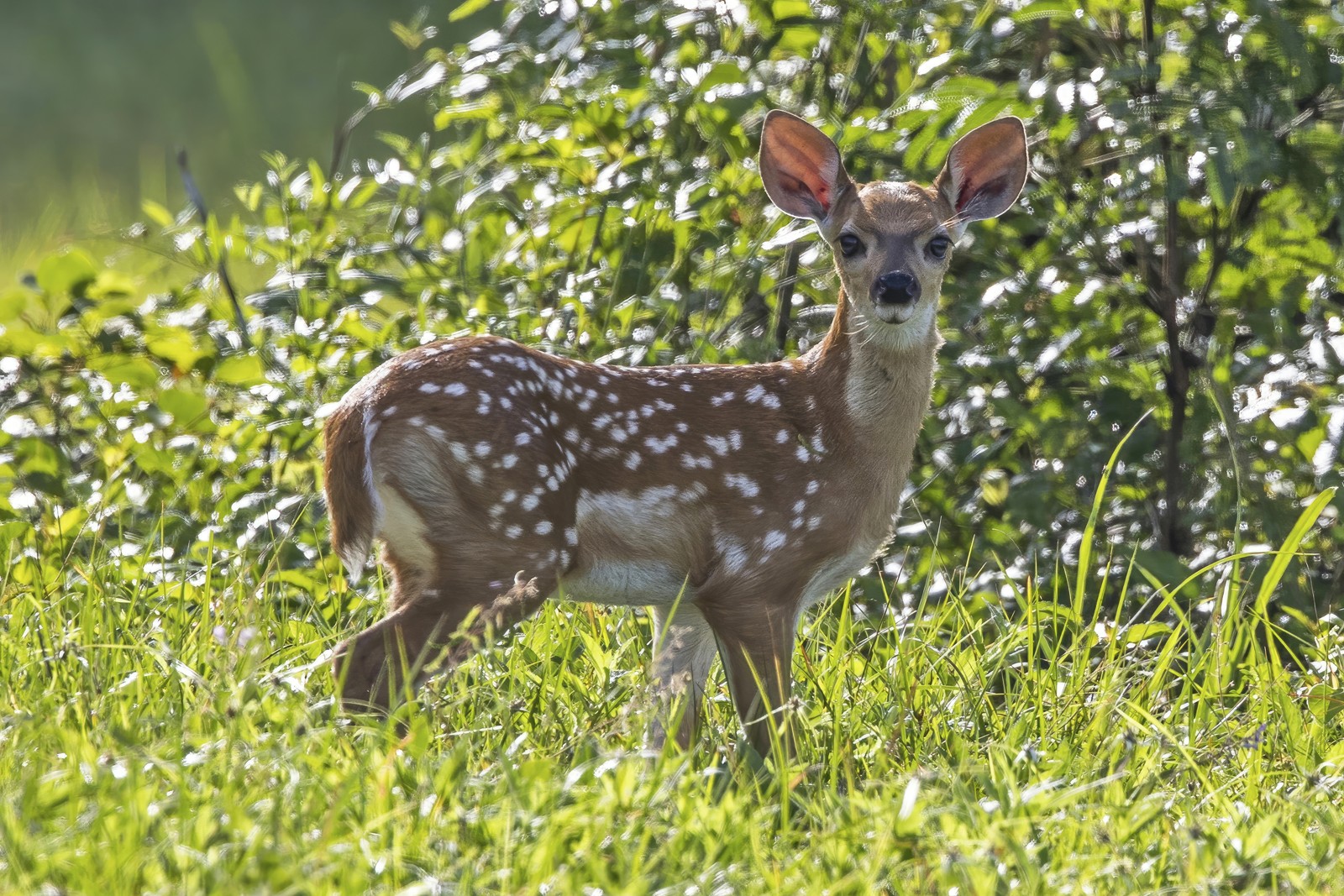Elk vs Red Deer: A Complete Comparison
When comparing Elk vs Red Deer, size stands as the most striking difference. North American Elk (Cervus canadensis) significantly outweigh their European Red Deer (Cervus elaphus) cousins, with bull elk reaching weights of 700-1100 pounds (317-499 kg) compared to red deer stags at 350-530 pounds (159-240 kg).
While both species belong to the Cervidae family, they diverged evolutionarily around 400,000 years ago. This separation has led to distinct characteristics in behavior, habitat preference, and physical attributes that make each species uniquely adapted to their respective environments.
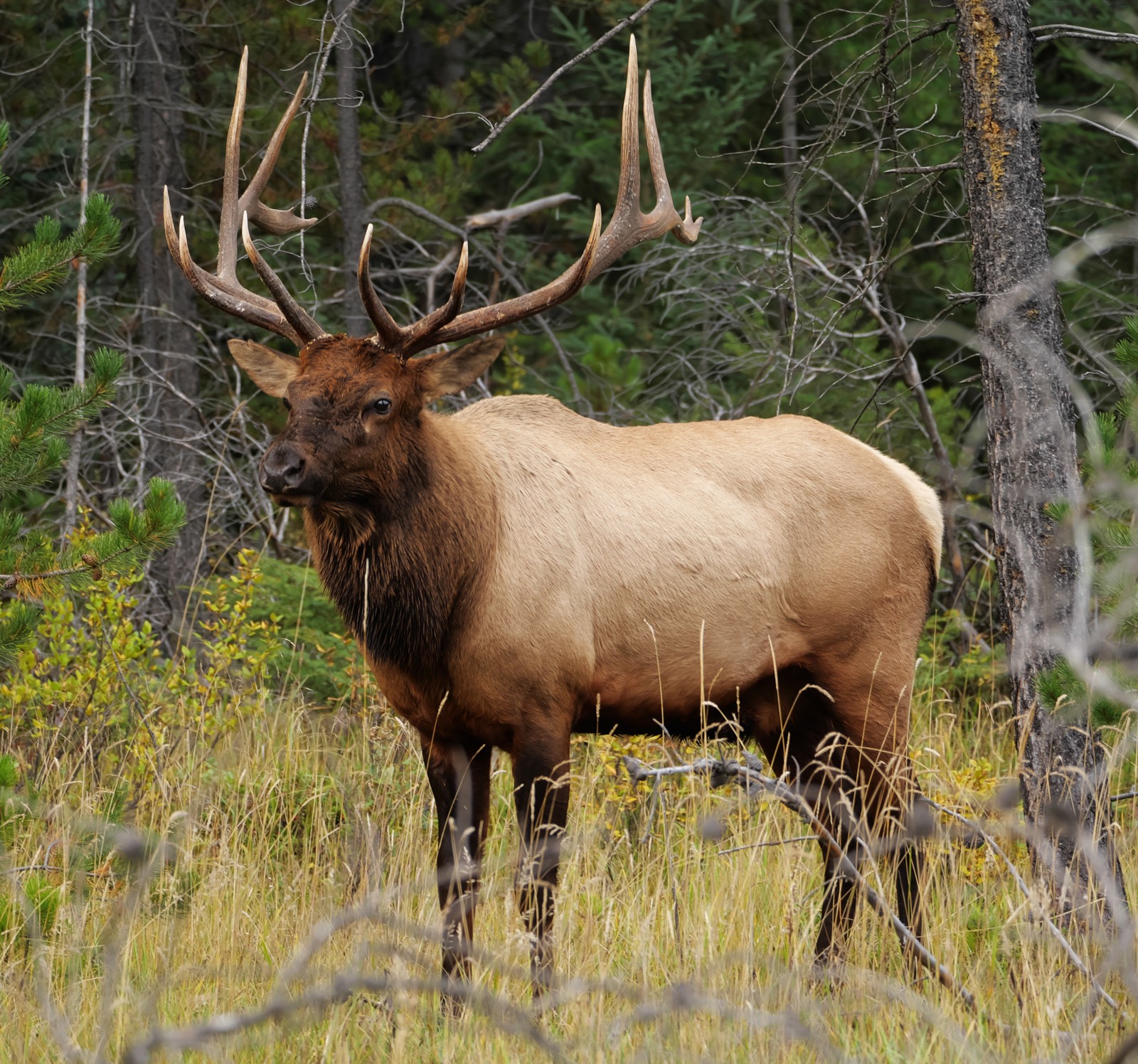
© Membeth / CC0
The North American Elk showcases its distinctive pale rump patch and darker mane, characteristics that set it apart from its European cousin. Bull elk typically develop larger, more complex antlers with additional points compared to red deer stags.
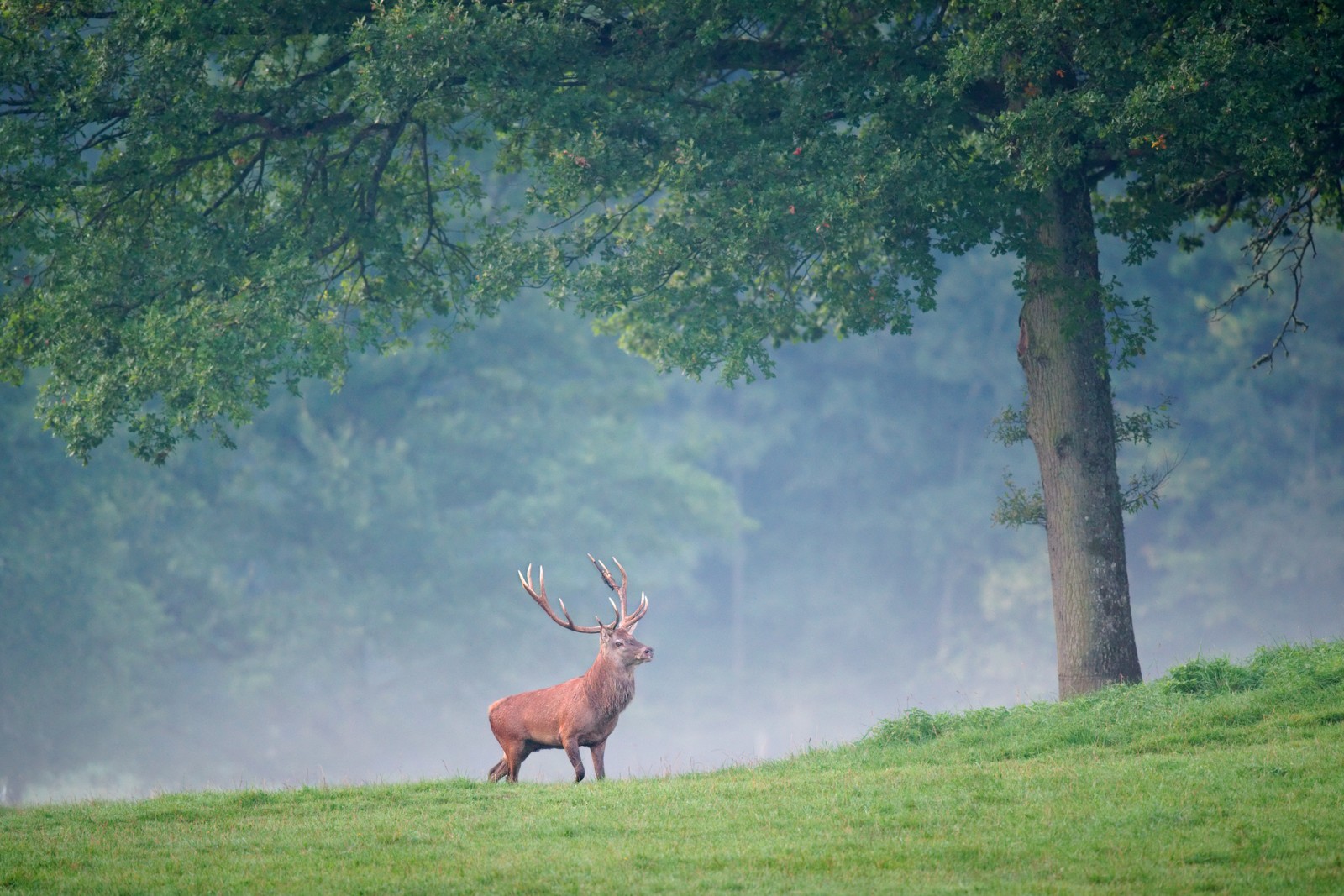
© Lviatour / CC BY-SA 3.0
Red Deer exhibit a more uniformly colored coat and generally smaller frame than elk. Their antlers typically show a distinctive crown formation at the top, unlike the elk’s more parallel tine arrangement.
Key Physical Differences: Elk vs Red Deer
| Feature | Elk | Red Deer |
|---|---|---|
| Weight (Males) | 700-1100 lbs (317-499 kg) | 350-530 lbs (159-240 kg) |
| Shoulder Height | 4.9-5.4 ft (150-165 cm) | 3.9-4.4 ft (120-135 cm) |
| Antler Points | 6-8 points per side typical | 4-5 points per side typical |
| Coat Color | Two-toned with pale rump | Uniform reddish-brown |
| Neck Mane | Prominent dark mane | Less pronounced neck fur |
| Body Build | More robust, larger frame | More slender, compact build |
Habitat and Distribution
Elk primarily inhabit North American forests, mountain meadows, and grasslands, ranging from Canada to northern Mexico. They demonstrate remarkable adaptability, thriving in elevations from sea level to 10,000 feet (3,048 meters).
Red Deer show preference for European woodland edges and moorland, with populations stretching from Scotland to Asia Minor. They typically remain below 6,500 feet (1,981 meters) in elevation, though some populations in Central Asia reach higher altitudes.
Behavioral Differences
Social Structure
Both species form separate male and female groups outside breeding season, but elk herds typically grow larger. Elk herds can number 200-400 individuals, while red deer rarely form groups larger than 50 animals.
Rutting Behavior
During mating season, both species engage in dramatic rutting displays, but their vocalizations differ distinctly:
- Elk bulls produce a characteristic “bugle” that can be heard for miles
- Red deer stags emit a deeper “roar” that carries less distance
Diet and Feeding Habits
While both species are classified as intermediate feeders, their dietary preferences show subtle differences:
-
Elk
- Greater emphasis on grasses (80% of diet)
- More likely to graze in open meadows
- Capable of digesting coarser vegetation
-
Red Deer
- More balanced diet between browse and graze
- Higher proportion of woody plants and shrubs
- More dependent on forest vegetation
Conservation Status and Threats
Both species face similar conservation challenges, though their situations differ regionally:
- Elk populations have rebounded significantly from near-extinction in the early 1900s
- Red deer numbers remain stable but face habitat fragmentation issues
- Both species experience pressure from:
- Habitat loss
- Human development
- Climate change impacts on migration patterns
Who Would Win in a Confrontation?
While such encounters would never occur naturally due to geographic separation, a theoretical match-up between bull elk and red deer stags would likely favor the elk due to:
- Significant size advantage (often 200+ pounds heavier)
- Larger antlers with more points
- Greater muscular mass
- More aggressive rutting behavior
However, such comparisons serve only academic interest, as both species play vital roles in their respective ecosystems without natural competition between them.
